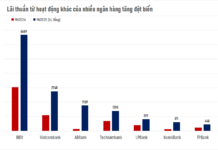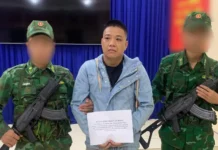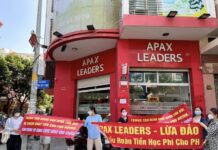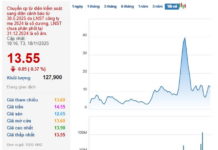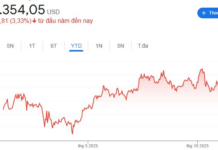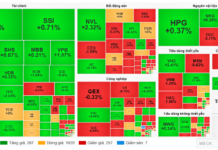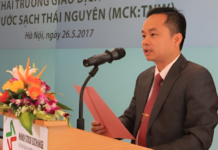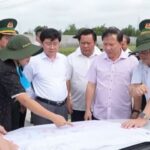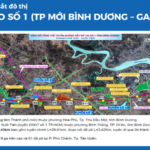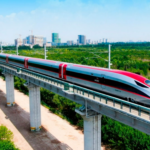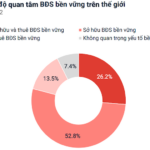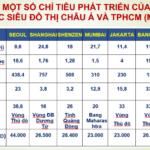Recently, the leadership of Ho Chi Minh City (HCMC) chaired a meeting of the Steering Committee and worked with the HCMC Urban Railway Management Board to discuss the development strategy for the city’s rail network.
During the meeting, Secretary of the City Party Committee Tran Luu Quang, who heads the Steering Committee, instructed the entire system to focus on completing six metro lines in HCMC and two national railway lines assigned by the central government.
Notably, Secretary Quang announced that the city will commence construction of the Ben Thanh – Can Gio metro line on December 19. He directed relevant departments to simultaneously execute multiple tasks to ensure timely progress, avoiding delays due to lack of coordination. The Ben Thanh – Can Gio metro project is proposed by VinSpeed High-Speed Railway Investment and Development JSC, a subsidiary of Vingroup.
Additionally, the Party Secretary emphasized that among the six metro lines, three key lines—Metro Line 2 Ben Thanh – Tham Luong, Metro Line 2 Ben Thanh – Thu Thiem, and the Thu Thiem – Long Thanh line—must be completed before 2030. He called for clear assignment of responsibilities and timelines to prevent overlaps and stagnation in implementation.
To monitor progress, the HCMC Urban Railway Management Board has been tasked with creating two Gantt charts: one covering the period from now until 2030 and another until June 2026. These charts will oversee all tasks of departments and agencies involved in the urban rail network development.
Regarding resettlement efforts, Secretary Tran Luu Quang affirmed that the city will arrange resettlement on a project-by-project basis, coupled with rental support mechanisms if resettlement areas are not yet completed. A portion of pre-built housing will also be prepared in convenient locations to promptly address special cases, ensuring long-term stability and livelihoods for affected residents. He further instructed the digitization of the entire resettlement process to enhance transparency, accuracy, and convenience for impacted citizens.

HCMC Party Secretary Tran Luu Quang speaking at the meeting (Photo: SGGP).
According to assessments, funding from the central government and HCMC’s budget covers only about 66% of investment needs. Therefore, the city must urgently develop plans to mobilize additional resources. Proposed solutions include leveraging land funds through the Transit-Oriented Development (TOD) model and public-private partnerships (PPPs), particularly Build-Transfer (BT) contracts.
At the meeting, Dr. Truong Minh Huy Vu, Director of the HCMC Institute for Development Studies, suggested establishing a state-owned Urban Railway Corporation under the HCMC People’s Committee to ensure synchronized investment, management, and operation of the metro system.
Chairman of the HCMC People’s Committee Nguyen Van Duoc also directed relevant departments and units to select capable investors, comprehensively review the railway network planning to update the city’s master plan, and adjust HCMC’s planning for the 2021–2030 period with a vision to 2050. The city will review and develop urban area planning around metro stations and depots following the TOD model, optimizing land use and resources for HCMC’s sustainable development.
According to the Environmental Impact Assessment (EIA) report for the Ben Thanh – Can Gio urban railway project prepared by VinSpeed High-Speed Railway Investment and Development JSC, the metro line connecting HCMC’s center with Can Gio spans nearly 53 km, with a total investment of over VND 85.65 trillion.
The entire line is designed as a double-track system with a standard gauge of 1,435 mm, a maximum design speed of 350 km/h, reducing travel time from Ben Thanh Station to Can Gio’s center to just over 13 minutes.
As per the investor’s plan, the Ben Thanh – Can Gio metro line starts at Ben Thanh Station (directly connecting with Metro Line 1 Ben Thanh – Suoi Tien) and ends at the Can Gio Sea-Reclamation Urban Area. The line includes one depot in Can Gio and two maintenance centers in Tan Thuan (former District 7) and Can Gio. The project passes through eight wards and communes: Ben Thanh, Xom Chieu, Tan Thuan, Tan My, Nha Be, Binh Khanh, An Thoi Dong, and Can Gio, utilizing a total land area of nearly 318 hectares.
Proposed Capital Increase for Bến Thành – Tham Lương Metro Line to VND 52 Trillion
The proposed investment for the 11-kilometer railway line has been revised upward from 47.890 trillion VND to 52.047 trillion VND. This adjustment accounts for expanded construction scope, technology upgrades, and inflationary impacts.
Implementing Special Mechanisms for the High-Speed Rail Project Through Khanh Hoa
The People’s Committee of Khanh Hoa Province has approved the principle of direct procurement for consulting, consulting fees, and construction packages, as well as the implementation of compensation, support, and resettlement activities for the North-South High-Speed Railway Project, specifically for the section passing through the province.





